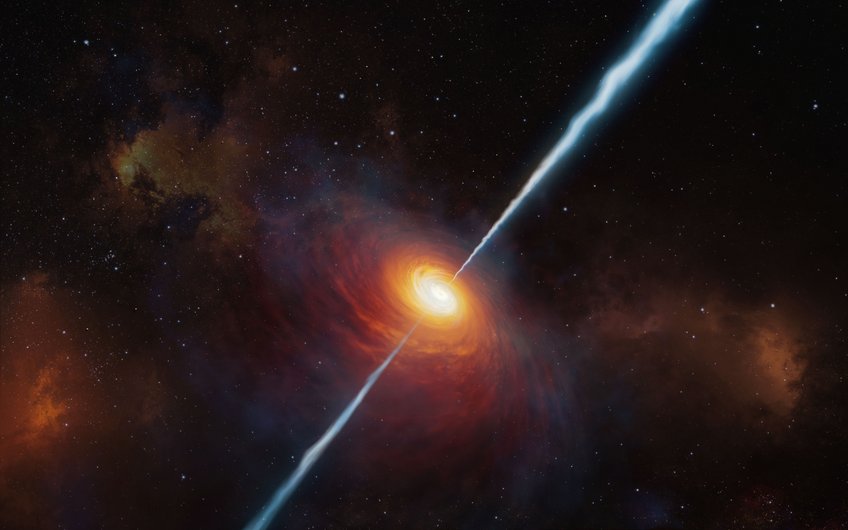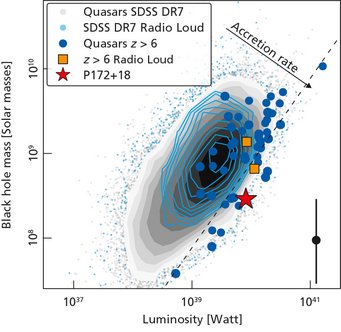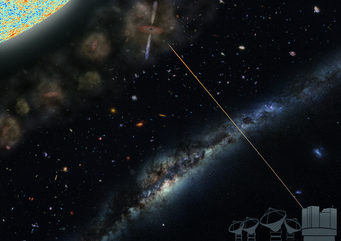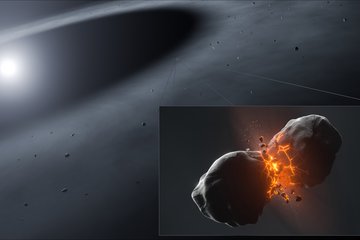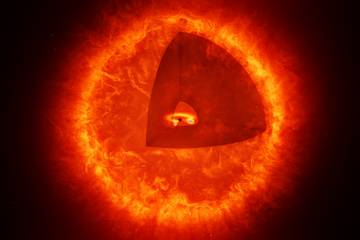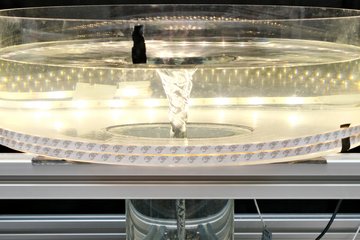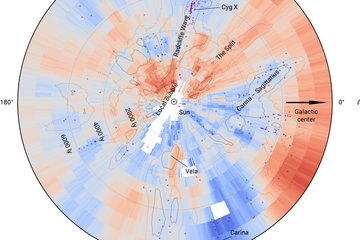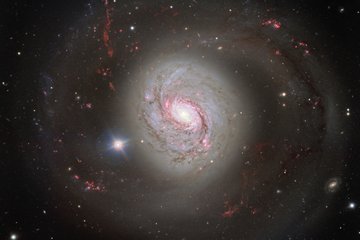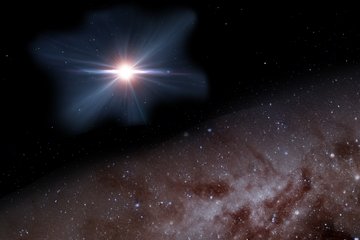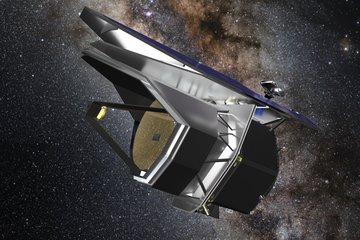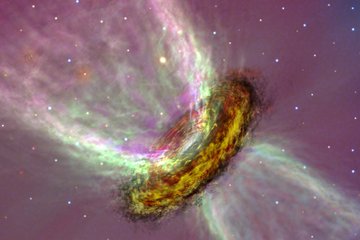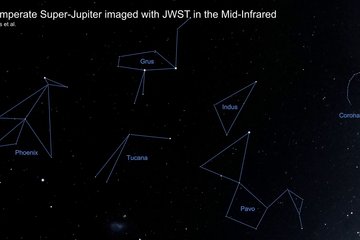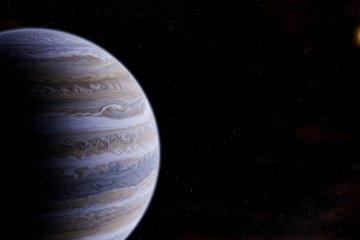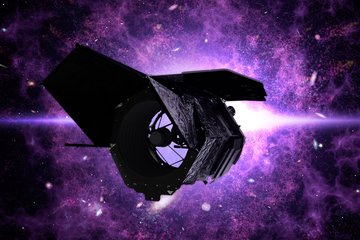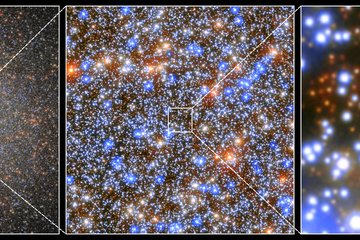The most distant radio beacon in the early Universe
Astronomers discover the most distant radio-loud quasar currently known
Quasars are the highly luminous centres of galaxies powered by supermassive black holes actively accreting matter. By using various telescopes, astronomers from the Max Planck Institute for Astronomy and the European Southern Observatory have now found the most distant radio-bright quasar known so far. Telescopes see this quasar designated P172+18 when the Universe was only 780 million years old. P172+18 is one of the fastest-growing supermassive black holes known to date, emitting about 580 times as much energy as the entire Milky Way. Such distant radio-loud quasars are essential for studying the formation and evolution of massive galaxies and black holes in the early Universe. The study appears in The Astrophysical Journal.
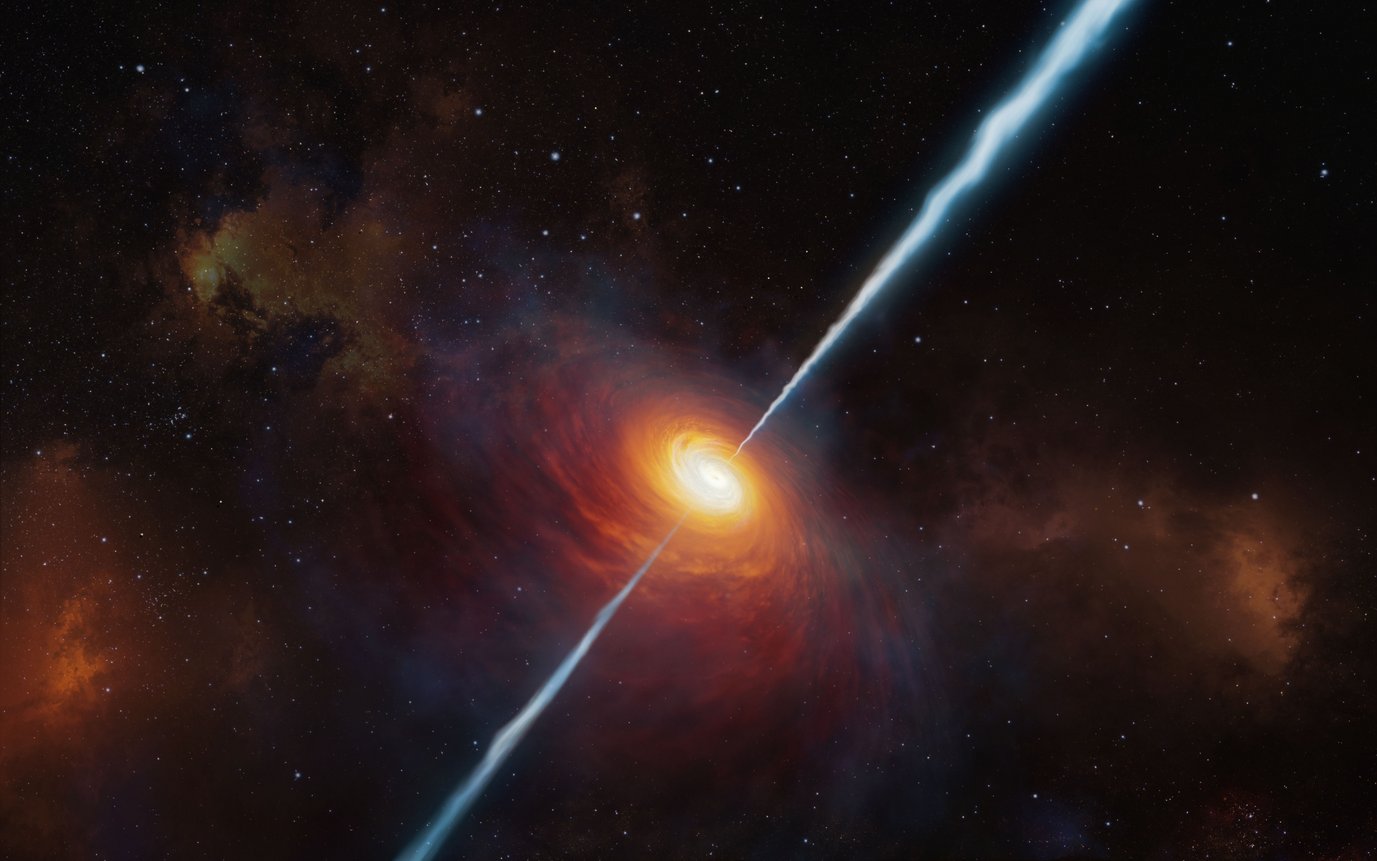
Quasars are among the brightest objects in the Universe. Therefore, astronomers can study them in detail at large cosmological distances. Although first discovered in 1963 by measuring radio waves, only 10% of quasars are radio-loud, i. e., shine particularly bright at radio frequencies. However, astronomers struggle to explain this small fraction and whether it also holds for the earliest cosmic epochs. Until recently, only three radio-loud quasars with redshifts (z) of six or more were known, with the most distant being at z = 6.2. Redshift is the measure cosmologists use to indicate large distances of objects caused by the cosmic expansion that moves the electromagnetic spectrum towards larger wavelengths. Redshift directly corresponds to the age of the Universe at which, e. g., a quasar is observed.
Now, an international group of researchers have discovered the most distant radio source known to date. Eduardo Bañados, an astrophysicist at the Max Planck Institute for Astronomy (MPIA) in Heidelberg, and Chiara Mazzucchelli of the European Southern Observatory (ESO) in Chile and former PhD students at MPIA headed the collaboration. The scientists found the quasar designated P172+18 at redshift z = 6.82. It corresponds to an era when the Universe was just 780 million years old, which is about 100 million years earlier than the previous record holder.
“I find it very exciting to discover new black holes for the first time, and to provide one more building block to understand the primordial Universe,” says Mazzucchelli.
“The observations are not just for chasing distance records,” Bañados explains. Jan-Torge Schindler, MPIA scientist and co-author of this study, adds, “distant radio-loud quasars at the beginning of the evolution of the cosmos also serve as beacons to study material that lies between Earth and the quasars.” Because gas at different redshifts will leave its fingerprint on the spectrum of quasars, astronomers can use the pattern to determine the gas density and its distribution in the early Universe.
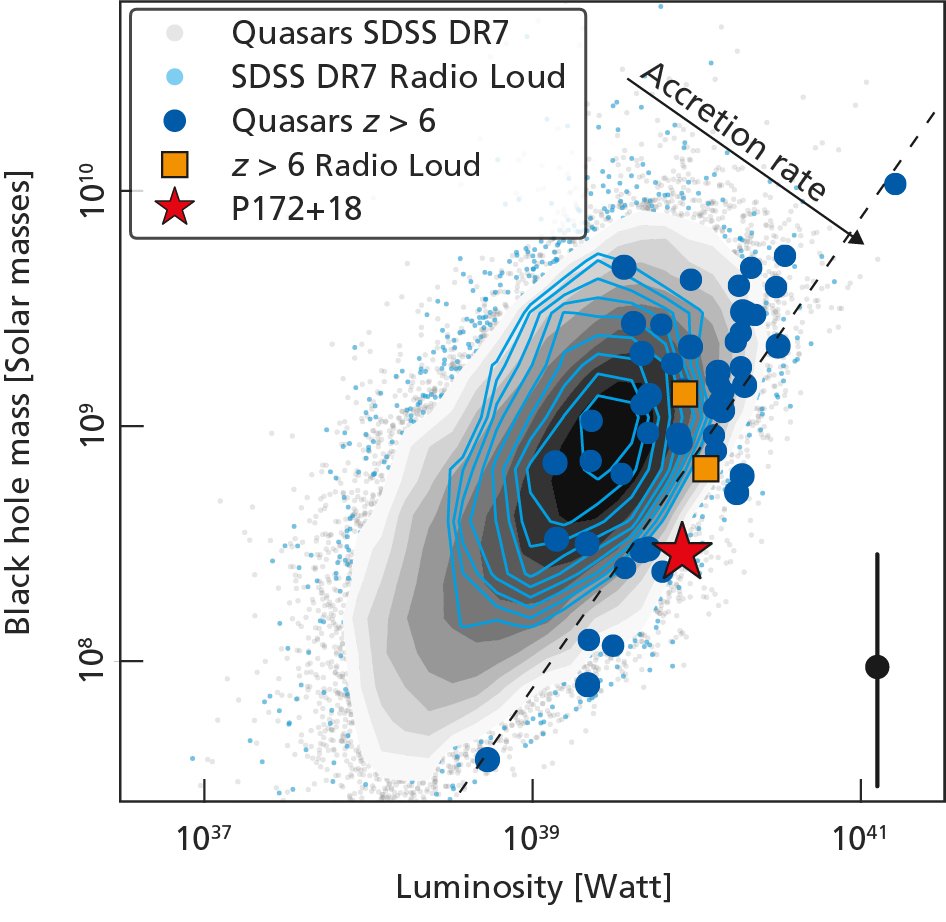
The supermassive black hole in the centre provides the gravity that attracts the surrounding gas and causes it to plunge inside. An accretion disk forms in the process, over which the gas swirls into the black hole. Its friction causes heating to such high temperatures that it glows particularly brightly in UV light. This process releases as much radiant energy per second as 580 times that of the entire Milky Way.
P172+18’s black hole mass amounts to about 70 times the mass of its counterpart in the Milky Way centre, and it is still rapidly growing. The measurements indicate this quasar hosts one of the fastest accreting supermassive black holes known. “This black hole is enjoying a feast and is accumulating mass very quickly,” Irham Andika, co-author and MPIA PhD student, asserts. The resulting radiation emitted by the accretion disk becomes so intense that it counteracts the collapsing gas and gradually slows down the inflow.
The radio emission measured by the researchers with NRAO’s Karl G. Jansky Very Large Array (VLA) points to a jet accelerating ionised gas in a narrowly focused beam to near the speed of light. Such jets also serve as a valve that relieves some of the pressure built up by the accretion process. A comparison with 20-year-old data suggests that P172+18 has lost radio luminosity in recent years. However, whether this finding has anything to do with a weakening jet and a reduction in accretion activity can only be conclusively determined with further measurements.
“Originally, P172+18 was only one of many quasar candidates identified by an evaluation of the Pan-STARRS survey,” Bañados describes. “Ultimately, however, we needed precise observations with infrared telescopes to determine the distance of the quasar and the black hole properties.” Astronomers employ infrared cameras and spectrographs to capture the light objects in the early Universe emit. To achieve the necessary precision, the researchers combined observations from the Magellan Baade Telescope at Las Campanas Observatory (Chile), the Nordic Optical Telescope (NOT) on La Palma (Spain), the Keck telescope in Hawaiʻi (USA), the Very Large Telescope (VLT) of the European Southern Observatory (ESO Chile) and the Large Binocular Telescope (LBT) on Mount Graham (USA).
While studying the radio data, the researchers discovered another radio source in the vicinity of P172+18. Still, they have not yet determined its redshift and distance. Due to the quasars’ spatial distribution, the probability of another chance hit in the immediate vicinity is very low. If it were a physically connected source, the distance projected against the imaginary celestial sphere would be about 400,000 light-years. This range corresponds to roughly twice the distance between the Milky Way and the Small Magellanic Cloud. The team led by Bañados is now trying to confirm whether these two sources are physically associated. If true, it would indicate that this is one of the first galaxy overdensities in the early Universe.
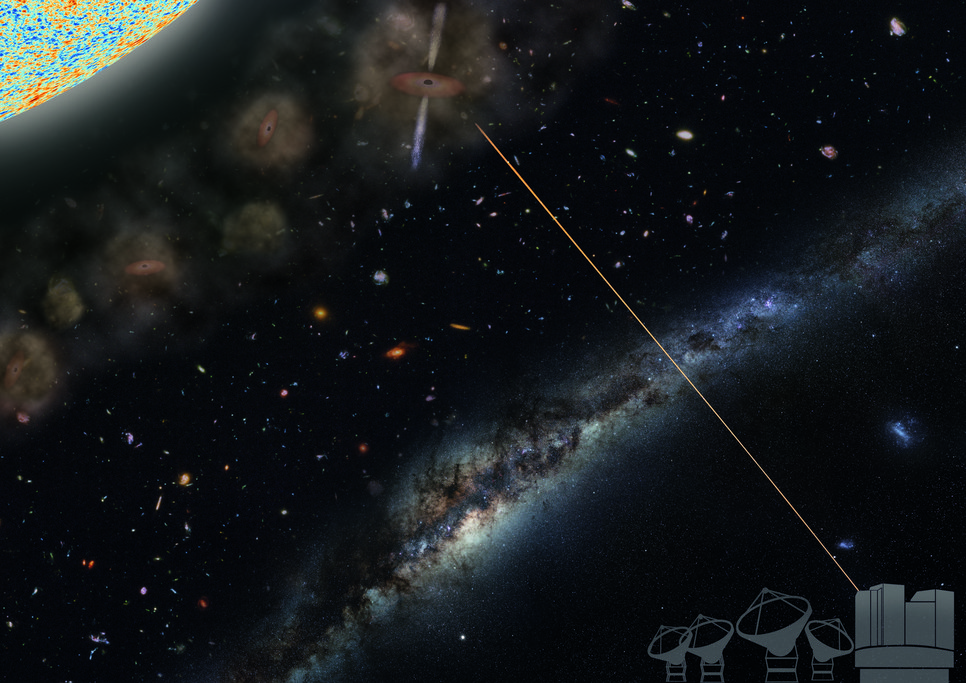
The discovery of early galaxy grouping would be spectacular because exploring the formation of structures in this epoch is just beginning. The idea is that clouds of neutral hydrogen initially assemble, which then develop into galaxies, potentially hosting quasars. Systematic research into such hydrogen clouds during the first billion years of the Universe is still a long way off, but it is in principle possible. For this purpose, radio-loud quasars serve as background sources with which researchers can detect these clouds. Astronomers still don’t know why different quasars exhibit such a wide variety of radio emission. Studying them at the earliest possible cosmic epochs can provide clues about how supermassive black holes grow. It is one of the biggest mysteries of astrophysics that still needs to be solved.
However, astronomers need as many of these quasars as possible. “Our measurements show that P172+18’s radio properties are rather average compared to other radio-loud quasars,” Bañados notes. “That’s why we are optimistic and suspect there are many more radio-loud quasars to be discovered out there, perhaps at even larger cosmological distances. Our search continues.”
Background information
The team was composed of: Eduardo Bañados (Max Planck Institute for Astronomy [MPIA] and The Observatories of the Carnegie Institution for Science), Chiara Mazzucchelli (European Southern Observatory), Emmanuel Momjian (National Radio Astronomy Observatory [NRAO]), Anna-Christina Eilers (MIT Kavli Institute for Astrophysics and Space Research), Feige Wang (Steward Observatory, University of Arizona [Steward]), Jan-Torge Schindler (MPIA), Thomas Connor (Jet Propulsion Laboratory, California Institute of Technology [JPL/Caltech]), Irham Taufik Andika (MPIA and International Max Planck Research School for Astronomy & Cosmic Physics at the University of Heidelberg), Aaron J. Barth (Department of Physics and Astronomy, University of California, Irvine), Chris Carilli (NRAO and Astrophysics Group, Cavendish Laboratory), Frederick Davies (MPIA), Roberto Decarli (INAF, Osservatorio di Astrofisica e Scienza dello Spazio, Bologna [INAF Bologna]), Xiaohui Fan (Steward), Emanuele Paolo Farina (Max Planck Institute for Astrophysics), Joseph F. Hennawi (Department of Physics, University of California, Santa Barbara), Antonio Pensabene (Dipartimento di Fisica e Astronomia, Università di Bologna and INAF Bologna), Daniel Stern (JPL/Caltech), Bram P. Venemans (MPIA), Lukas Wenzl (Department of Astronomy, Cornell University and MPIA), Jinyi Yang (Steward)
MN
